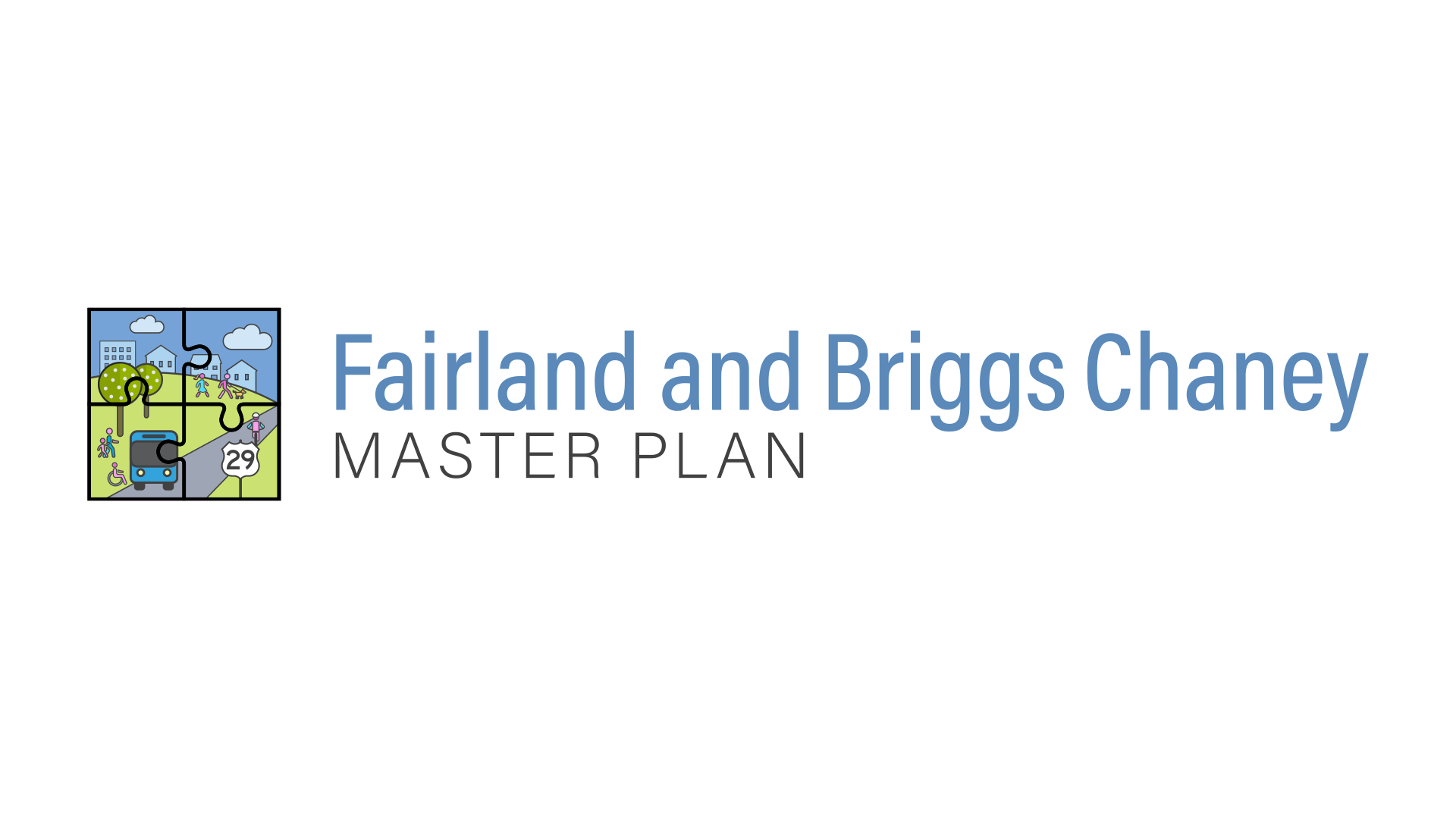
Plan seeks to improve transit access, housing and shopping options, and pedestrian connections along U.S. 29/Columbia Pike; community invited to continue to participate during Planning Board public process
WHEATON, Md. – The Montgomery County Planning Department, part of The Maryland-National Capital Park and Planning Commission (M-NCPPC), will present the Working Draft of the Fairland and Briggs Chaney Master Plan to the Montgomery County Planning Board during its weekly meeting on Thursday, March 23. During this meeting, the Planning Board will have the opportunity to provide initial feedback, accept the Working Draft Plan as the Public Hearing Draft, and set the date for a public hearing to receive additional community feedback. This is the first step prior to the Planning Board conducting work sessions to review and revise the draft plan and then submitting the draft plan to the County Council for its public review and final approval.
The Working Draft Plan draws from hundreds of public comments, conversations, ideas, and illustrations generated by visioning workshop participants and community stakeholders since summer 2021. The draft plan provides recommendations to support its five major goals of creating a more complete community, fostering corridor growth, promoting economic development, increasing housing opportunities, and improving connectedness.
Read the Fairland and Briggs Chaney Master Plan Working Draft
Visit the Fairland and Briggs Chaney Master Plan’s dedicated website
“This plan is a great opportunity for the Fairland and Briggs Chaney community to emerge from past planning policy and government decision-making that resulted in inequitable investments and limited growth in eastern Montgomery County,” said Acting Planning Director Tanya Stern. “Montgomery Planning’s Equity Agenda for Planning’s commitment to racial equity and social justice is woven throughout the plan’s recommended actions to stimulate more public and private investment and amenities, while celebrating and supporting the future success of Fairland and Briggs Chaney’s multi-cultural neighborhoods and business community.”
The Fairland and Briggs Chaney Master Plan is an update to a portion of the 1997 Fairland Master Plan and consists primarily of property and communities of Fairland and Briggs Chaney along the U.S. 29/Columbia Pike corridor from near Paint Branch on the southern end of the plan area to Greencastle Road on the north end. The Working Draft provides policies and recommendations on existing and future land uses and zoning, housing inventory and needs, transportation systems, historic preservation opportunities, area park facilities, and the environment.
“We are excited to continue engaging with the community to finalize the vision for an equitable, just, and prosperous future for the Fairland and Briggs Chaney communities,” said project co-lead Clark Larson. “The plan’s Working Draft prioritizes Thrive Montgomery 2050’s goals and policies to create a vibrant economy, equity for all residents, and a healthy environment. As part of achieving that, these draft recommendations focus on fostering what are called ‘Complete Communities’ where all residents have equitable access to housing, transportation, and other services and amenities without having to travel too far from home.”
Key Recommendations of Fairland and Briggs Chaney Master Plan Working Draft:
- Establish an emphasis on community gateways and activity centers as compact, high-density mixed-use centers focused on frequent transit service; safe pedestrian movement; greater tree canopy and ‘cool’ surfaces at summer hot spots; and attractive community gathering spaces.
- Prioritize U.S. 29 (Columbia Pike) as a ‘transit-first’ corridor that provides frequent, convenient regional connections from the plan area to Silver Spring, Washington D.C., and Howard County.
- Complete a continuous network of trails and paths connecting activity centers, neighborhoods, parks, open spaces, community facilities, and bus stops, both within and beyond the master plan area.
- Establish an East County Resilience Hub as a community center for daily community needs and a destination for reliable electricity, water, temporary shelter, food, indoor heating and cooling, social services, and fellowship during public emergencies.
- Support a healthy community food system that includes healthy grocery and dining destinations, farmers markets, and community gardens.
About the Fairland and Briggs Chaney Master Plan
The Fairland and Briggs Chaney Master Plan is an update to a portion of the 1997 Fairland Master Plan and will establish a clear vision for an equitable, just, and prosperous future for the Fairland community, mirroring the county’s long-term priorities, which include a vibrant economy, equity for all residents, and a healthy environment. The master plan boundary consists primarily of property and communities of Fairland and Briggs Chaney along the U.S. 29 Corridor from near Paint Branch on the south to Greencastle Road on the north. The update will examine and provide policies and recommendations on existing and future land uses and zoning, housing inventory and needs, transportation systems, historic preservation opportunities, area park facilities, and the environment.
This master plan will take cues from the equity framework in the update to the county’s General Plan, Thrive Montgomery 2050, which describes how places with equitable access to opportunity produce strong, successful communities. Goals of the Fairland and Briggs Chaney Master Plan include:
- Complete Community: Identify and correct past inequitable development policies to make the Fairland and Briggs Chaney communities more whole and connected by integrating centers of housing, retail, and office development with parks and open space to make 15-minute living a reality for as many people as possible.
- Resilient Economy: Promote economic development and job growth within the plan area and surrounding communities.
- Housing: Promote racial and economic diversity and equity in housing to help rectify past discriminatory housing policies in every neighborhood.
- Arts, Culture and Environment: Support arts and cultural institutions, through parks, open space and environment, recreational programming, and development, to celebrate our diversity, strengthen pride of place, and make the county more attractive and interesting.
- Corridor Growth and Connectivity: Promote and prioritize public and private investment along the Route 29 corridor and neighboring communities to leverage and attract future private investment in community facilities and redevelopment, including a safer, more comfortable network for walking, biking, and rolling that connects the corridor communities.